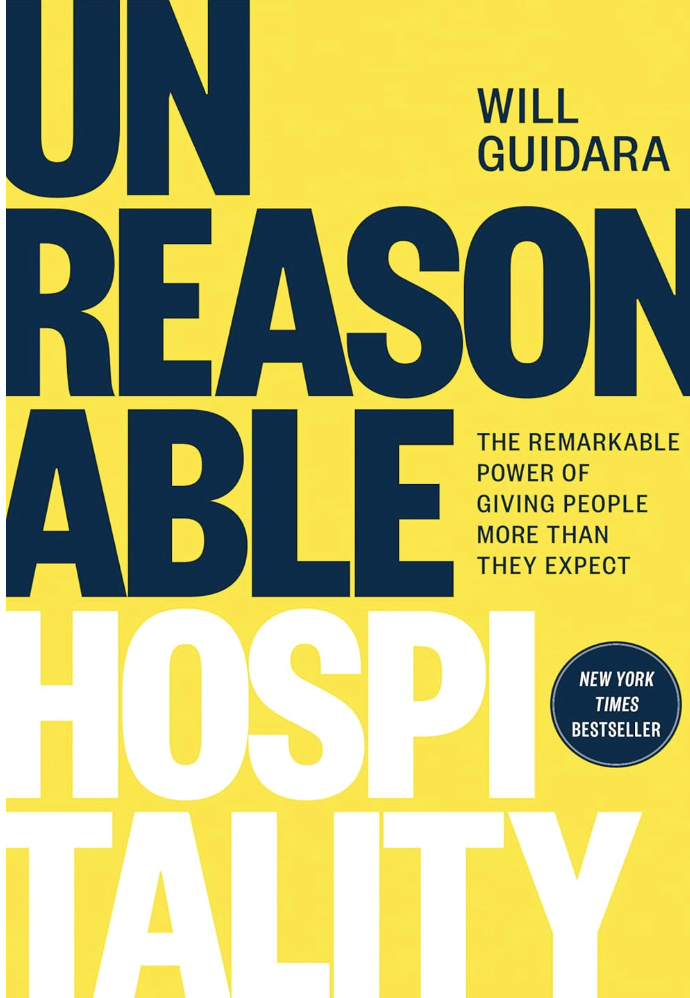Thought Leadership Can: Advocate

You have a platform. And you can use that platform to amplify the voices of the people you serve.
TL;DR:
- Thought leadership that advocates can build brand awareness and credibility by provoking conversation about the issues that inspire you, among the readers you need to reach.
- Thought leadership that advocates must carefully and authentically curate the voices of others.
- Thought leadership advocacy never sells; it informs, it questions, and it moves.
- One way to get it right: take an editorial, rather than an authorial, approach.
Thought leaders are often advocates - and I love seeing thought leaders use their platforms to bring visibility to issues and to amplify the voices of people working to solve them. It can be an incredibly fruitful way to build relationships, educate your audience, and generate interest, even urgency, in the problem you and your brand solve.
Thought leadership advocacy works best when you have created a consistent content strategy designed to achieve advocacy goals, and in concert with an umbrella content marketing strategy. It is absolutely and always top of funnel content: it is never commercial, and promotes brand visibility only and ever indirectly.
There’s lots of ways to get thought leadership advocacy right. But there are very real pitfalls to this genre that can promptly undercut a thought leaders' credibility. Intellectual navel gazing, misrepresentation, appropriation, and succumbing to the urge to sell your brand or business can torpedo well-meaning thought leaders who hope to use their words to advocate for people and problems.
Read on to explore two craft approaches to thought leadership advocacy. I will:
- Share the one question I ask authors to help them get this tricky genre right
- Help you decide if -- and how -- an advocacy approach can be part of your thought leadership strategy.
- Review a recent book that showcases the potentials and perils of the genre: James Patterson's and Matt Eversmann's The Secret Lives of Booksellers and Librarians (Hachette, 2024).
Thought Leadership Advocacy: To Author or to Edit?
Thought leadership that advocates must bring real voices into content in a way that lets them drive the conversation, not just support it. To do this well, you can’t just curate narratives that support what you already believe. You need to stay humble enough to allow the insights of real stakeholders and change makers to alter your thinking. You need to adjust your argument, potentially even your arrangement and format, to reflect that new knowledge.
Most importantly - you need to make real estate on the page for those voices to take up space and truly shine.
So how do you make this space - and do it well?
I like to get started by asking my authors a simple question:
“Do you want to stay in the driver’s seat as the author of this piece, or are you interested in taking a backseat as an editor? How essential is it to the goals of this campaign that you author (or edit) this content?”
To define the terms here: An authorial approach requires that you not only create the narrative and filter contributions from others through your own voice, style, and narrative overlay. About ninety percent of the words in the piece are yours, exclusive of directly quoted material. It’s ideal for when you have a solution to a problem for which you need to argue - and thus when you need to be seen as an author(ity).
In contrast, an editorial approach requires collecting and organizing contributions and providing stylistic consistency across the whole. Ninety-percent of the words in the piece are from contributors, exclusive of your editorial direction. It works best to pique interest and prompt conversation; it explores, rather than argues for, solutions. It's right when you need to be seen as a curious curator of ideas, questions, and people - a center of influence.
There are good reasons for choosing either approach. One writer I know is choosing to author because he has personal experiences and narratives to share that deepen the contextualization of the curated stories throughout his book. He also happens to be pursuing leadership positions that will allow him a direct hand in changing the issues he writes about - the book is thus an opportunity to establish his authority. And since he is writing about and working on a particularly thorny issue, he needs every ounce of authority he can muster to win hearts and change minds.
It's not for the faint of heart - authorial approaches to thought leadership advocacy carry a heavy responsibility to translate and represent others' voices with nuance and precision. It's detail-oriented, socially and culturally-conscious work that takes time and effort to master. It's worth it, however, when those contributors smile at the way their words shine on your page - and they double down on their support for you as the leader your coalition needs.
In my humble opinion, taking an editorial approach is easier to execute. Yes, there is legwork involved in sourcing and curating contributions and ensuring editorial consistency (although you can outsource much of that work). When you do this, your thoughts become the connective tissue of the campaign – the arrangement and style – rather than the content itself. This is fun work to do: making pairings and finding relationships among contributions is creative and thought provoking, and can lead to understanding the people and problem for which you advocate better - without the pressure of choosing every word.
Importantly, the entire approach hinges upon making maximum space for others' voices - which means that there is less opportunity for misrepresentation, appropriation, or commercialization to appear.
I say less, but not none - as we'll see in the example that follows, the editorial approach still needs to carefully foreground contributions without selling, misrepresenting, or appropriating. The 10% of words you choose need to be chosen very, very carefully - and the materials from contributors that you choose to excise or retain are incredibly meaningful in shaping the narrative of your project too.
When to be an Author
- You have deep connections within your field and can leverage them to contribute stories and interviews, if not full submissions.
- The goal of your campaign is to cement your authority on a problem and the solution you, your brand, and your coalition believe in.
- You are skilled at careful, nuanced copy and line editing - or you have an editorial talent who can help.
When to be an Editor
- You have deep connections within your field and can leverage them to contribute content.
- The goal of your campaign is to generate interest and awareness: to prompt questioning, to encourage conversation, to explore issues and problems – and not yet argue for solutions.
- You are skilled at arranging content strategically to create relationships - or you have an editorial talent who can help.
How To Do It

A book I am loving that does this well is James Patterson’s and Matt Eversmann’s The Secret Lives of Booksellers and Librarians: True Stories of the Magic of Reading, just out from Hachette. Yes – it’s edited by the James Patterson, the man who can’t stop writing thrillers that people can’t stop reading. The man who thus might have the most influential platform for thought leadership advocacy ever.
It contributes to James’s advocacy for social and industry issues, and it’s a strong example for authors and leaders looking to follow suit. I am reading it like mad - it’s very simple, accessible prose and short chapters help the pages fly by – and I’m feeling utterly inspired.
The book illuminates the role booksellers and libraries in shaping literary marketplaces. In their own words, these professionals are preservationists of human history, frontline educators, arbiters of taste and thus movers of markets, the compassionate adults every kid needs, and even protectors of democracy and freedom. Divided into five parts featuring narratives that illuminate the community, industry, and politics of reading, the collection’s curation feels loose, but intentional, and a savvy reader will find surprising relationships among the stories - without always feeling the editors’ hand in their making.
I love, for example, that Carolyn Foote’s story of the #FReadom movement – a viral social campaign started by Foote and other Texas librarians that challenges censorship efforts targeting public libraries and schools – is followed by Cody Higgins’s reflection on the power and purpose of running a Barnes and Noble in Dothan, Alabama.
Texas has the most book bans of any state in the nation. A neighbor, Alabama, did not ban any books in 2023. But the APLS did require one Alabama library to review their entire collection of 8,000 children’s books to ensure compliance with the new regulations on content labeled appropriate for children. Like wildfire smoke, censorship is crossing state lines and librarians are increasingly finding themselves breathing it all in.
Higgins’s narrative doesn’t touch the topic of book banning - but it does frame the bookstore as a place of freedom and belonging. As a neighbor to Foote’s story in the book, Higgins’s tale makes a subtle political statement: there are other places – states, institutions, businesses – supporting #FReadom, and young people are welcome there.
There’s a series of wonderfully provocative questions posed by this pairing: will – and how will – libraries and bookstores partner in ensuring intellectual freedom? Can the book marketplace - so insistently committed to intellectual gatekeeping - even become an outlet for preserving the right to read freely? And if neither libraries nor bookstores can be rid of censorship, where can we read and think and learn with freedom? How can we protect reading as a vehicle for understanding, curiosity, and exploration?
This is an incredible moment of thought leadership, created by simply curating and amplifying the voices of the people who are running this industry behind the scenes. It’s even more impactful because Patterson’s and Eversmann’s editorial approach ensures cohesion, clarity, and relationship, while letting the voices on the page do all of the storytelling. Notice that this pairing provokes, rather than answers questions: the intention here is to build interest by encouraging debate, rather than to stake a firm claim.
It’s inspiring, propulsive, and it works: I can’t wait to go buy from my friend’s indie bookstore in East Lansing (A Novel Concept, check it out), and I've booked three story times at the local library for the kids already. I am even seeing Barnes and Noble differently - as a potential site of political activism and organization, despite (maybe even because of?) its glossy corporate veneer.
What NOT To Do: Beware the Sell
One pairing in The Secret Lives of Booksellers and Librarians is much less successful, and it threatens to upend what is otherwise an accessible and thought-provoking collection.
One of the book’s themes is to show the impact that individual authors have on people’s lives - to illustrate the power of the medium to influence hearts and minds at scale. To that end, the editors arrange several back-to-back vignettes that mention authors repeatedly.
It works well in the instance of Judy Blume, whose influence on young readers is narrated by middle school librarian Lorrie Roussin just before Blume herself shares what it’s like to become a bookseller after having been a bestselling author. The pairing again poses questions - what is this unique ecosystem among libraries, stores, and authors - and how do certain individuals play an outsize role in shaping it? What is the nature of a literary life, and how can it take different manifestations? What is the unique recipe of collaboration and individual endeavor that makes up the business of books?
But it doesn’t work well in the following pairing, which features two mentions of the man Himself.
One bookseller, Erin Blake, recounts the hilarious story of her mother’s obsession with James Patterson’s Alex Cross series – and those of her reading group, a group of nuns who can’t wait for the next installment. Initially funny and cute, the mention doesn’t play as well next to the following story from McKenna Jordan, who organizes author events at her bookstore in Delaware:
“Authors want to come back, and they’ll tell their publishers.
We push for a long time to get one particular author to the store. ‘Can we get James Patterson? Can we get James Patterson?’ And finally we get to host James Patterson…He was a delight. Everyone was happy. So that was an amazing night” (58).
It’s lovely to know that James Patterson can kill it at a book signing. But in my opinion, these little plugs (and it could be argued that they are simply homages) for the James Patterson Brand ironically undercut the editors’ thought leadership power.
The move feels blatantly commercial. Patterson could easily have excised these mentions of his author(ity) in the book marketplace. Instead, it feels like he is using those narratives to cement that authority (and sell even more of his own fiction). While bringing more visibility to booksellers and librarians, Patterson reminds us all that one significant part of their purpose in the industry is to make money for authors and publishers. And here, they are called upon to do it even while telling the stories of their own lives.
This is the fatal flaw of a thought leadership campaign based on advocacy: a sell, for you, your brand, your business.
At this moment, and in continued glowing Patterson name-drops throughout the book, it felt very difficult to see this book as anything other than a money grab. And I so wish I could keep enjoying it as a thoughtful collection aimed at generating support for and awareness of the people who protect intellectual freedom and democracy amid the shelves and media carts and espresso machines of our libraries and bookstores. But sadly, the bloom is off the rose.
You might be saying, “Wait a minute, Kate, this is just couple of instances. Surely, this isn’t a hard sell, and surely, it doesn’t do irreparable harm to the James Patterson Brand.”
You’re right - his brand can survive this kind of self-promotion amidst an advocacy moment. But yours might not. And as my reader-response suggests, even slight mentions of The Brand can be enough to undermine your position.
Thought leadership advocacy is not about you. It’s not for you. It’s for the voices you amplify, and the readers you want to reach. It should be sharp-elbowed at times, even bristling with energy and motivation. It has to come from an authentic place of wanting to help generate reach for others. It’s about coalition building. It’s about humility. It’s about care.
Thought leadership advocacy is a powerful strategy that can bolster your network, build credibility, and promote engagement with the problems you care about. It requires making space for the people whose voices matter most. Those who do it best know that it builds the brand indirectly through authentic, inspired audience engagement. It doesn’t sell - it cares.
Curious about where advocacy fits within your thought leadership or content marketing strategy? Fledgling can help. Schedule your free consultation today.


